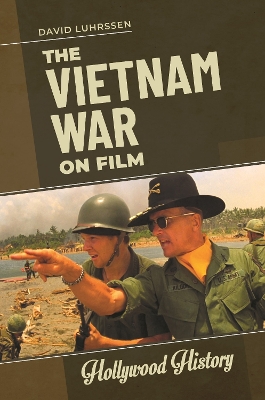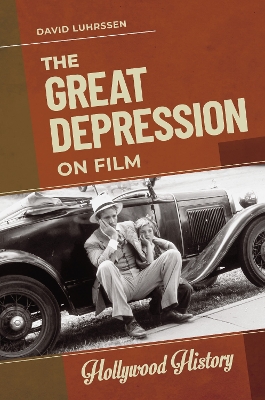Hollywood History
3 total works
Vietnam War on Film illustrates how to employ film as a teaching tool. It also stands on its own as an account of the war and the major films that have depicted it.
Even for many people who experienced the Vietnam War first hand, memories of that conflict have often been shaped by the popular films that depicted it: The Quiet American, The Green Berets, The Deer Hunter, Coming Home, Platoon, Full Metal Jacket, and Apocalypse Now, among others. Vietnam War on Film examines how the war is portrayed through a selection of ten iconic films that represent the war through dramatization and storytelling as opposed to through documentary footage.
The book includes an introduction to the war's history and a timeline of events, followed by ten chapters, each of which focuses on a specific Vietnam War movie. Chapters offer a uniquely detailed level of historical context for the films, weighing their depiction of events against the historical record and evaluating how well or how poorly those films reflected the truth and shaped public memory and discourse over the war. A final section of "Resources" provides a comprehensive annotated bibliography of print and electronic sources to aid students and teachers in further research.
- Provides a unique guide to the Vietnam War experience for film history buffs, students and scholars of history, and fans of the cinema
- Offers equal emphasis on the films themselves and the historical events depicted
- Presents carefully researched and highly informative coverage
- Stimulates debate over the various ways the war was interpreted and experienced
World War II on Film examines the war through the lens of 12 films. The movies selected include productions made during World War II and in each succeeding decade, providing a sense of how different generations perceive the war.
World War II on Film provides a succinct yet well-grounded appraisal of that war as seen through 12 representative films. The book separates fact from fiction, showing where the movies were accurate and where they departed from reality, and places them in the larger context of historical and social events. Each movie chosen represents a particular aspect of the conflict, including the air war over Europe, the condition of prisoners of war, Nazi atrocities, and the British evacuation at Dunkirk.
Unlike most histories of Hollywood during World War II or the genre of war movies, World War II on Film examines in depth the relation between the depictions of events, beliefs, attitudes, and ways of life as seen on film with reality as documented by historians or recorded by journalists or eye-witnesses to the war. The volume will appeal to high school and college readers, as well as general interest readers and film buffs.
- Provides readers with the perspectives of non-American combatants
- Gives readers an understanding of American perspectives on the war
- Looks at the importance of the decisions made by individuals as well as the social forces that shaped the war
- Arms readers with an understanding of how ideology helped determine the decisions of wartime leaders
This book presents the Great Depression through the lens of 13 films, beginning with movies made during the Depression and ending with films from the 21st century, and encourages readers to examine the various depictions of this period throughout history.
The Great Depression on Film is a unique guide to how the Great Depression was represented and is remembered, making it an excellent resource for students or anyone interested in film history or U.S. history. Each film is set in a different sector of American life, focusing on such topics as white supremacy, political protest, segregation, environmental degradation, crime, religion, the class system, and popular culture in the U.S. during the 1930s.
This book is indispensable for clearing away misconceptions fostered by the movies while acknowledging the power of film in shaping public memory. The book separates fact from fiction, detailing where the movies are accurate and where they depart from reality, and places them in the larger context of historical and social events. Eyewitness or journalistic accounts are referenced and quoted in the text to help readers differentiate between ideas, attitudes, and events presented in the films, as well as the historical facts which inspired those films.
- Provides readers with a history of the Great Depression as it played out in the lives of many classes and groups of people in the U.S.
- Presents a cultural overview of America during that critical time, going beyond politics to include popular music, entertainment, religion, literature, and sports
- Dives into an exemplary study of the difficulty in dramatizing history on film along with the way film images displace actual history in popular memory
- Gives a detailed overview of how Hollywood cinema represented and misrepresented life during the Depression


